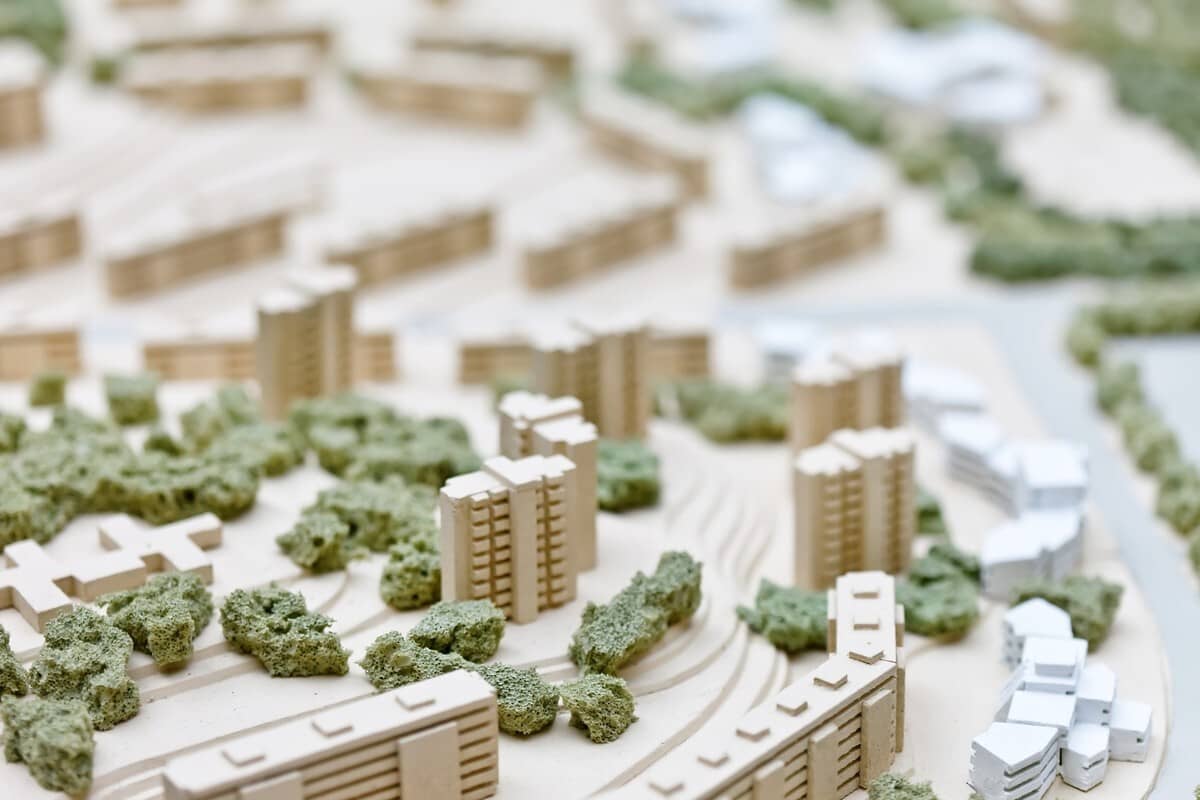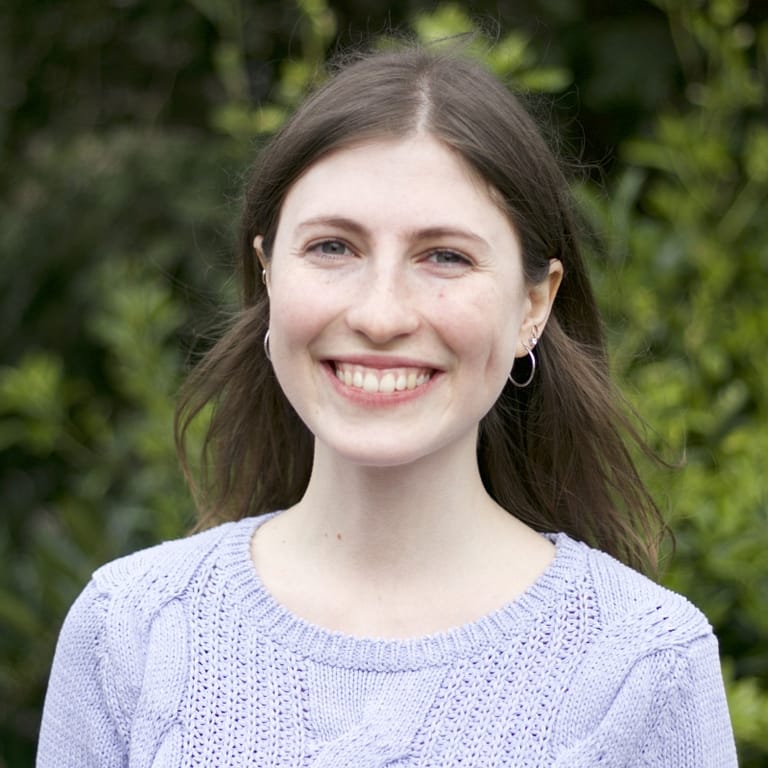The webinar “Building the Circular Economy” brings together a panel of experts to explore circular economy strategies in the built environment.
Our cities consultant Andrew McCue, joined Managing Director of Closed Loop Partners Tazia Smith, international cluster and innovation expert Rodin Genoff, and CEO and co-owner of PKC Dorte Christensen on a webinar hosted by ESGX. Together, they discussed ways to divert building waste from landfill and make cities more resource-efficient, how companies and municipalities can collaborate to catalyze new initiatives, and how to access capital to support these projects.
An information economy
What information is needed to facilitate circular construction choices? As Andrew McCue explains, “we want to be able to understand how many [secondary] materials and building products are available in the city”, often referred to as ‘the urban mine’. Armed with this information, cities and regions can match demand for new building materials with supply of secondary materials that will become available when buildings are demolished.
For this, information about buildings must be tracked and shared. Materials passports are datasets that describe what materials, products, and components go into a building. By capturing these material details, they increase buildings’ value when they have to be demolished or remodeled. In this way, buildings become a valuable asset to be mined later on, rather than creating a wasteful burden on the local community.
“Circular economy for the built environment is about maintaining the value of materials at their highest level so that we don’t cause harmful impacts to be repeated every time we need to use a similar material in the future.” – Andrew McCue, Cities and Industries Consultant at Metabolic
Collaboration across an ecosystem of actors
“Circular economy projects are usually unable to be vertically integrated. It’s not a single entity doing all the work, but a diverse ecosystem.” – Rodin Genoff, Owner Rodin Genoff & Associates
Circular economy implementation requires not only the sharing of information but, critically, collaboration between a range of urban actors. All actors within the ecosystem have a role to play, from small businesses to multinationals, governments to financial institutions.
For SMEs, which would otherwise lack resources and encounter obstacles in their path towards circularity, new circular projects require time, the right expertise, and financial investments. Dorte Christensen, CEO and co-owner of PKC, provides an inspirational example of a family-owned traditional building company that has transitioned to circular economy practices. Thanks to the Danish Government’s program “Manufacturing the Future”, PKC was able to approach the circular economy bringing together the region, cities, industry associations, sustainability engineers, and architects.
On the other end of the spectrum, multinationals benefit greatly from engaging in pre-competitive collaboration. Tazia Smith, MD of Closed Loop Partners shares the example of the “NextGen Consortium” project – a collaboration between Starbucks and McDonald’s, two leading competitors in the food-service packaging industry, working together to redesign the hot and cold fiber-to-go cup.
“These two companies need to work together, simply because there’s no recycler in the world who is going to sit there and pick out just the Starbucks recyclable cups. There is the need for a solution that can work within a system and advance the industry.” – Tazia Smith, MD of Closed Loop Partners
Driving financial capital to circular initiatives
The circular economy has potential to reduce costs, increase efficiency, and protect the environment – factors that should theoretically make it very attractive to investors. Yet, in most countries around the world the infrastructure to enable circular economic progress is lacking. Construction and demolition waste currently either goes to landfill or a material recovery facility – and there aren’t nearly enough of these that are well-functioning and can handle all types of waste. How do we advance beyond ad hoc projects towards a system where capital flows towards investment in circular economy infrastructure?
Tazia Smith shares examples of how public-private partnerships can be highly successful in achieving financial and net positive environmental outcomes for stakeholders that include corporates, their customers, municipalities, and the planet.
“If it was a great investment capital would flow. So how do we change systems incentives? How do we get corporate engagement?” – Tazia Smith, MD of Closed Loop Partners
One of the ways to get both capital and therefore more materials to flow in a circular economy is through mutually beneficial agreements and incentives. Construction and demolition waste processors, for example, require reliable, consistent feedstocks, and long-term off-take agreements in order to make themselves attractive to banks and financial investors.
An important part of this equation, and a core part of advancing the financial system, is how materials are priced. A new model is needed, one that takes into account externalities that are not currently being priced by the system. When looking at synergetic relationships, non-financial outcomes should be as important as financial, striving for net positive environmental and social outcomes. “We’re trying to advance the system. We’re trying to integrate sustainable finance, such that we start calling it finance,” says Tazia.
Best practices and leading examples

Panelists were asked to reflect on circular economy successes. Andrew McCue brought up the work of Charlotte, North Carolina and other US cities leading the way:
“Charlotte, North Carolina was the first North American city to explicitly adopt the circular economy as a city strategy. Their initial concern was twofold: running out of landfill space, and its economic development. They were looking for ways to capture that value and direct it towards the most needy population in and around Charlotte, and create new job opportunities. One of the things that came out of that project was that circular uses for the materials in the waste stream could generate and support exponentially more employees than landfilling or even conventional recycling.”
Charlotte is building an innovation and research center called the Innovation Barn that will explore circular economic concepts, enabling small light and medium manufacturing using waste streams, and running education programs.
Other cities to watch are Austin, Texas – which has been running a materials marketplace to connect secondary materials with potential buyers in the region – and Phoenix, Arizona, where the city has partnered with Arizona State University to set up an incubator predicated on developing technologies and businesses to make use of waste streams from the city.
Watch the full webinar here.
To learn more about cities, please visit our Cities and Regions hub






